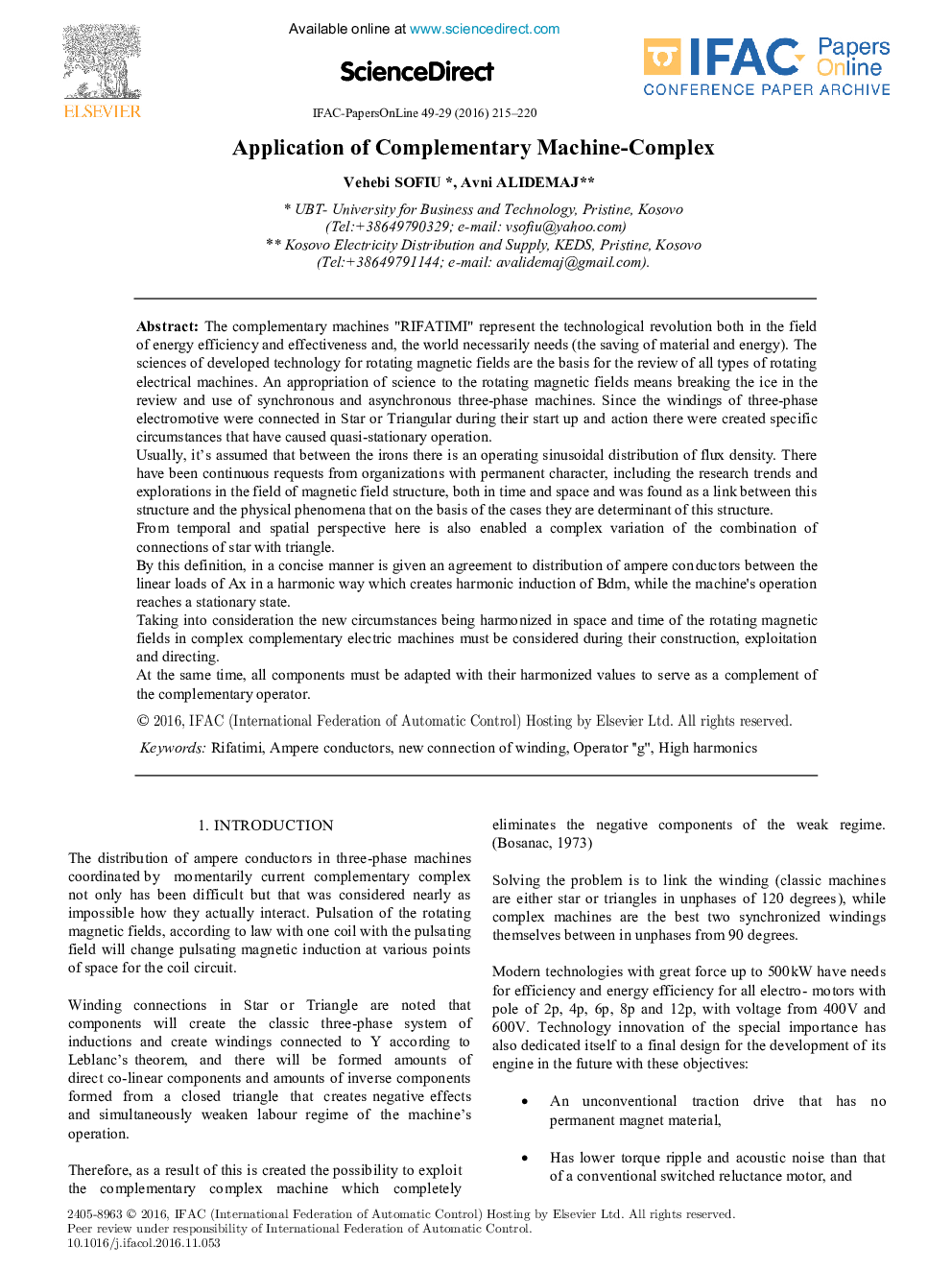| Article ID | Journal | Published Year | Pages | File Type |
|---|---|---|---|---|
| 5002156 | IFAC-PapersOnLine | 2016 | 6 Pages |
:The complementary machines "RIFATIMI" represent the technological revolution both in the field of energy efficiency and effectiveness and, the world necessarily needs (the saving of material and energy). The sciences of developed technology for rotating magnetic fields are the basis for the review of all types of rotating electrical machines. An appropriation of science to the rotating magnetic fields means breaking the ice in the review and use of synchronous and asynchronous three-phase machines. Since the windings of three-phase electromotive were connected in Star or Triangular during their start up and action there were created specific circumstances that have caused quasi-stationary operation.Usually, it's assumed that between the irons there is an operating sinusoidal distribution of flux density. There have been continuous requests from organizations with permanent character, including the research trends and explorations in the field of magnetic field structure, both in time and space and was found as a link between this structure and the physical phenomena that on the basis of the cases they are determinant of this structure.From temporal and spatial perspective here is also enabled a complex variation of the combination of connections of star with triangle.By this definition, in a concise manner is given an agreement to distribution of ampere conductors between the linear loads of Ax in a harmonic way which creates harmonic induction of Bdm, while the machine's operation reaches a stationary state.Taking into consideration the new circumstances being harmonized in space and time of the rotating magnetic fields in complex complementary electric machines must be considered during their construction, exploitation and directing.At the same time, all components must be adapted with their harmonized values to serve as a complement of the complementary operator.
